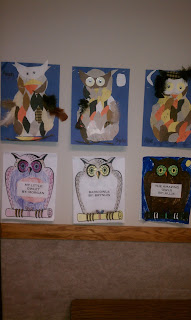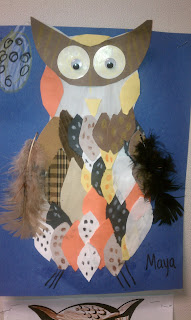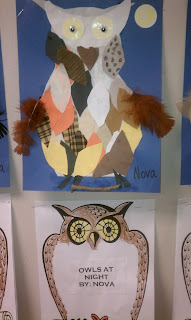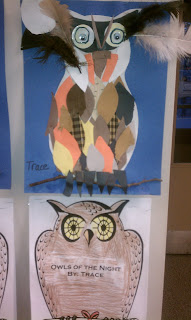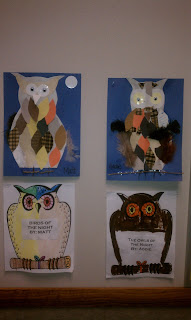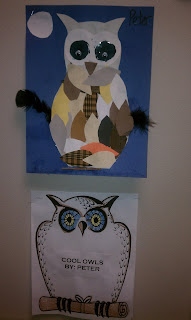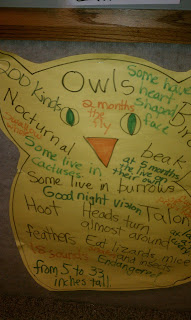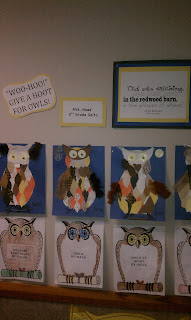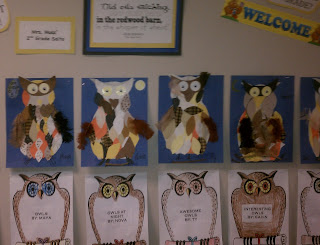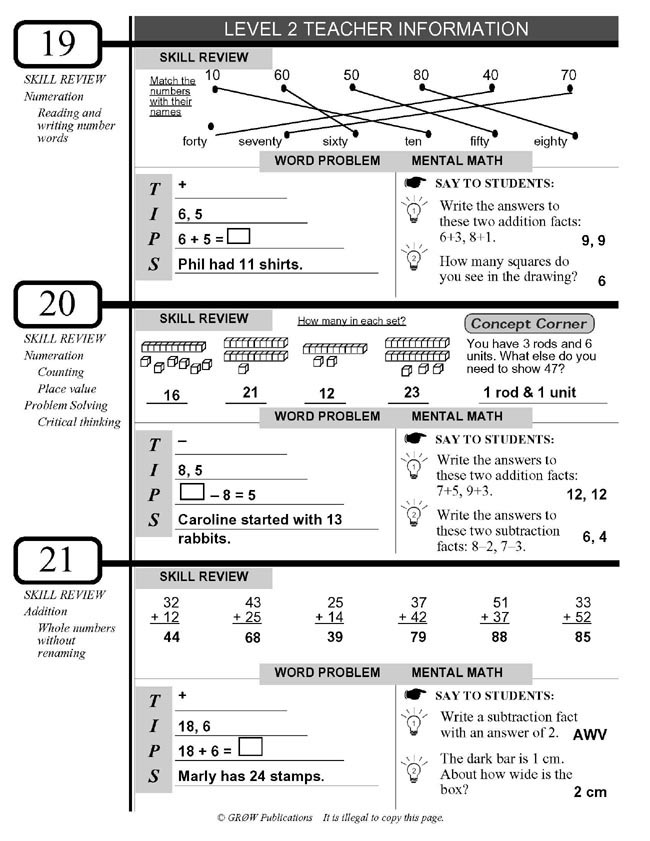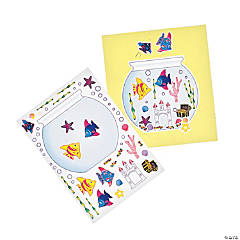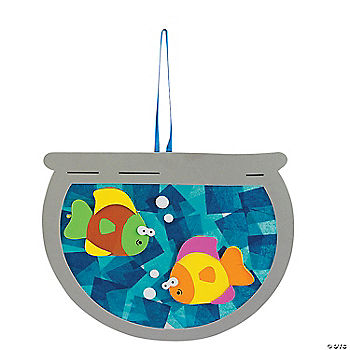I love the book A House for Hermit Crab by Eric Carle.
It is a great book to introduce students to ocean animals and hermit crabs specifically. After reading we do a crab art project and then some writing. Kids could choose between a crab fact book or maybe a crab acrostic poem or a story about a crab. If you want to go the fact booklet route…
The Best Kids Booksite has this cute hermit crab art project.
 |
| It looks just like the hermit crab in the book! |
CRAB POEMS – I always put poems on the back of artwork the students do and we read them together as a form of shared reading practice. Often you can put them to a tune like Twinkle Twinkle or Jimmy Crack Corn or Farmer in the Dell. Try it, it makes reading a lot more fun.
Five cranky crabs were digging on the shore.
One swam into a net and then there were four.
Four cranky crabs were floating in the sea.
One got tangled up in seaweed, then there were three.
Three cranky crabs were wondering what to do.
One dug a deep, deep hole, then there were two.
Two cranky crabs were warming in the sun.
One got scooped up in a cup, then there was one.
One cranky crab was smarter than his friends.
He hid between the jagged rocks,
That’s how the story ends!
Also Enchanted Learning has a crab printout page with interesting facts.
A very cute art project I found was a hand print crab with red paint. The red crab hand print craft is HERE at Funhandprintart.blogspot.com . I think it would be very cute and easy with C-R-A-B-S acrostic poems written beneath it.
A fun P.E. game is teaching kids CRAB BALL. They must walk on their hands and feet with their belly facing up and kick a ball into the soccer net or hockey net or just between 2 chairs. It’s hard to do and funny to watch and the kids love it.
I love doing themed activities. I think you can fit some of your language arts COMMON CORE in when you use a really interesting animal as your theme base. Crabs come in all varieties; horseshoe crabs, blue crabs, hermit crabs, there are so many ways to study and address crabs starting with a book of literature.
Another good literature book I like is Chadwick the Crab by Priscilla Cummings. It’s an older book I have in my library but it has lots of interesting crab facts in it as well as other ocean animals.
A cute 2 digit math addition worksheet printable is HERE at Kidzone Math Worksheets. An easier addition worksheet to 18 is HERE at Kidzone Math. Both worksheets have a crab on them. You can also find subtraction worksheets to download for free HERE.
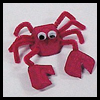
INTERESTING CRAB FACTS
YOU MIGHT NOT KNOW….
* Hermit crabs are crustaceans (an invertebrate with an exoskeleton).
* For protection, hermit crabs often move into empty shells. When it outgrows its shell, it moves into a new, larger one.
* Adult hermit crabs range in size from 1/2 inch to about 4 inches.
* A hermit crab has two pairs of antennae and round eyes on the ends of eye stalks. They have 10 legs, but only 6 legs show.
* Hermit crabs are scavengers.
* Hermit crabs are found on the Atlantic coast, West Indies, and South Pacific.
* Sometimes, hermit crabs carry other animals on their shells. These animals help camouflage him, and will move with the crab.
This is my favorite book to teach the difference between TO, TOO and TWO. It’s called Is This a House for Hermit Crab?
by Megan Mcdonald
Some of the text repeats too soft, too hard, too big, too small.
Kids can see when they need to use the too form in their writing (too much of something) which is really hard to teach and for them to understand without lots of examples. I find that reading this book with them does the trick. It’s also a fun way to do a theme day on CRABS!
